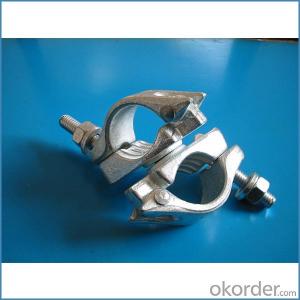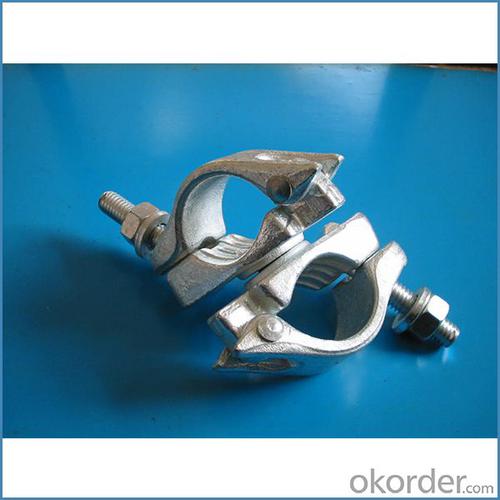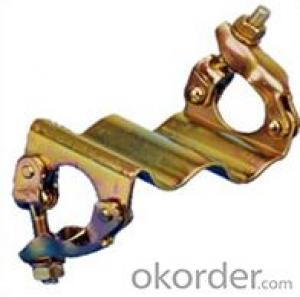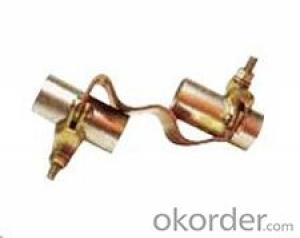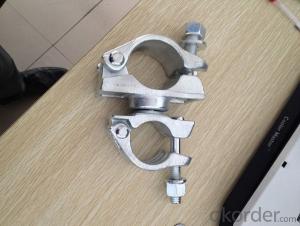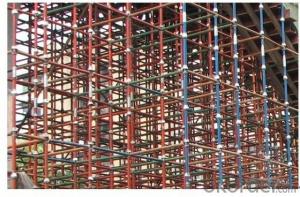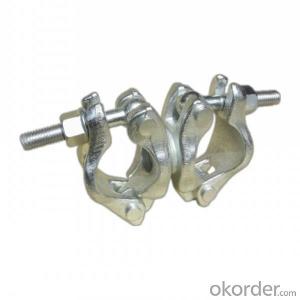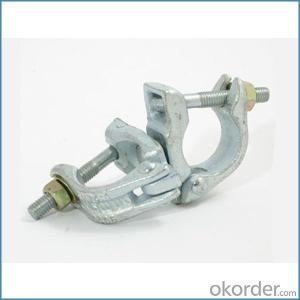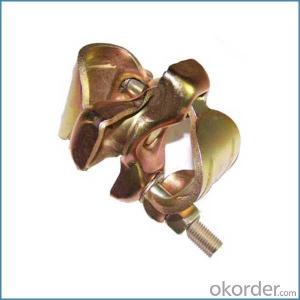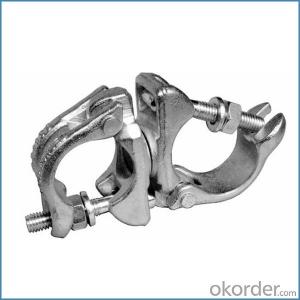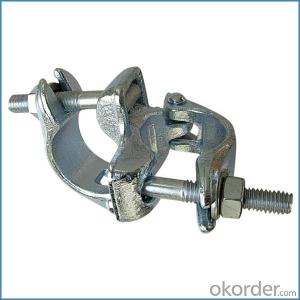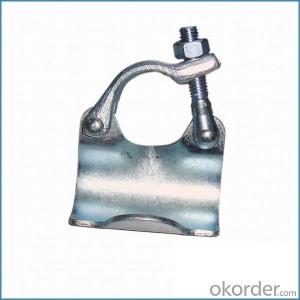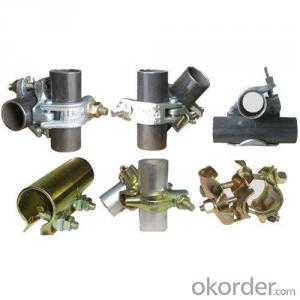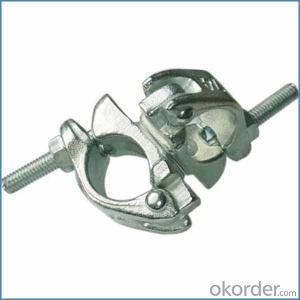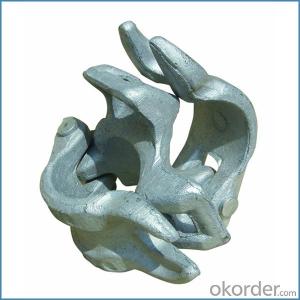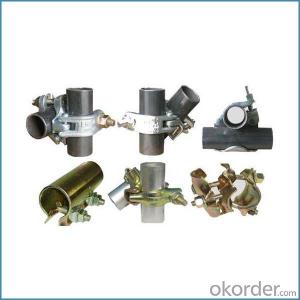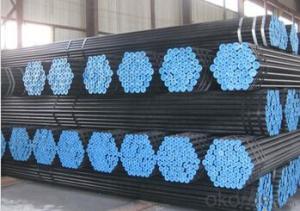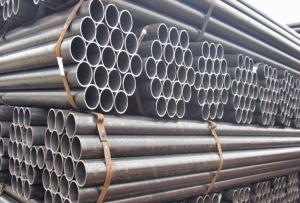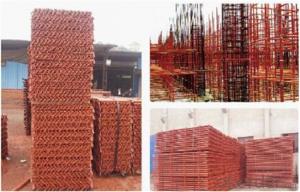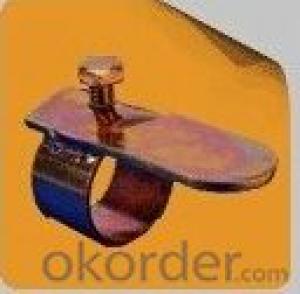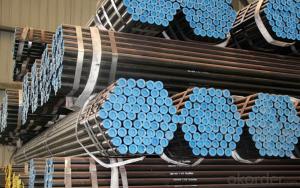Scaffolding Ladder Clamp british German Forged Type
- Loading Port:
- Tianjin
- Payment Terms:
- TT OR LC
- Min Order Qty:
- 1000 kg
- Supply Capability:
- 100000 kg/month
OKorder Service Pledge
OKorder Financial Service
You Might Also Like
Scaffolding Ladder Clamp british German Forged Type
Description
1.The scaffolding coupler is always used to connect the steel pipe as scaffolding system.
2.The often used coupler is swivel coupler and righ angle coupler .
3.We can provide types of scaffolding coupler according to your requirement.
4.Couoler can fix the 48.3mm scaffolding steel pipe tightly and make the whole scaffolding system more steadily.
Feature
(1)Excellent Anti-Breaking—Cold Pressed Steel
(2)Outstanding Resistance Deformation
(3)Strong Anti-Dropping Ability
Photo
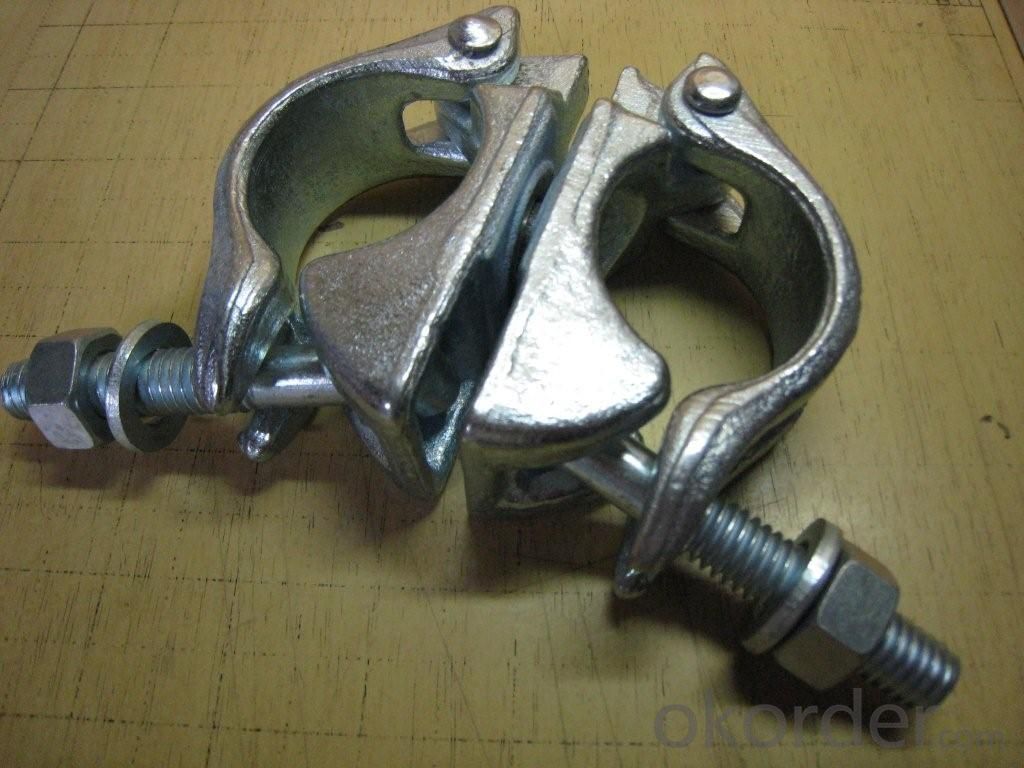
Parameter
| Material | Q235,345steel |
| Size | 48.3mm*48.3mm |
| Surface finish | Galvanized |
| Weight | 1.1kg around |
| Standard | BS1139,EN74 |
| Package | 25pcs/bag,steel pallet |
| Manufacture | As per customer requirement |
| Market | Africa, South America, the Middle East and Asia |
FAQ
Q: Are you a factory or trading company?
We are a state-owned corporation in China,dealing with various kinds of building materials.We have our holding subsidiaries.
Q: Where is your factory located? How can I visit there?
Our factory is located all around China.
Q: Can I get some samples?
Sample is free, customer only pay freight for the first time.
Q: Delivery?
10-30days. (5-15 containers)
Any question,feel free to contact us.
- Q: Florence Italy Duomo Construction finished?
- A local newspaper, on june the 3rd wrote that the restauration of the part of the Duomo called Porta della Mandorla (something like Almond Door) was finished and the scaffolders are down. (I looked for it in italian google news) This are news, but I was not personally there. Anyway Florence is so full of beautyes that you can't miss it.
- Q: Are there any specific safety precautions to consider when using steel tube couplers?
- Yes, there are several safety precautions to consider when using steel tube couplers. Firstly, it is important to ensure that the couplers are properly installed and secured according to the manufacturer's instructions. This typically involves tightening the bolts to the specified torque and using the correct type and size of bolts. It is also crucial to inspect the couplers and surrounding components regularly for any signs of wear, damage, or corrosion. Any damaged or worn couplers should be replaced immediately to avoid potential structural failures or accidents. Another safety precaution is to ensure that the couplers are used within their intended load capacity. Overloading the couplers can lead to structural failures, so it is important to calculate and adhere to the maximum load limits specified by the manufacturer. Additionally, when working with steel tube couplers, it is important to use proper personal protective equipment (PPE) such as gloves, safety glasses, and steel-toed boots to protect against potential injuries. It is also advisable to follow safe handling practices, such as using lifting equipment when necessary and avoiding sharp or sudden movements that could cause injury. Lastly, it is crucial to follow all applicable safety regulations and standards when using steel tube couplers. This includes ensuring that the couplers are used in compliance with local building codes, industry standards, and any specific regulations related to the project or application. By considering these safety precautions, users can minimize the risk of accidents, injuries, and structural failures when working with steel tube couplers.
- Q: What are the potential risks or hazards associated with steel tube couplers in scaffolding?
- Steel tube couplers in scaffolding pose various potential risks and hazards. To begin with, structural failure is a major concern. Insufficient installation or tightening of the couplers can result in an inability to bear the weight of the scaffolding and workers, leading to collapse or instability. This can cause severe injuries or even fatalities. Furthermore, the use of low-quality or non-compliant couplers can compromise their strength and integrity due to weak points or defects. This increases the likelihood of failure and can result in accidents on the scaffolding. Improper use or overloading of the couplers is another hazard. Exceeding the weight or load capacity can stress or damage the couplers, raising the risk of failure. It is crucial for workers to be trained on the correct usage and limitations of the couplers to prevent accidents. Additionally, inadequate maintenance or infrequent inspections can pose risks. Over time, couplers can corrode or sustain damage from weather conditions or misuse. Without proper maintenance or inspection, these couplers can deteriorate, becoming unsafe for workers on the scaffolding. Lastly, the use of damaged or incompatible couplers is a risk to be avoided. Couplers that are bent, cracked, or visibly damaged should not be utilized as they may not provide the necessary strength and stability. Similarly, using couplers from different manufacturers or with different dimensions can compromise the structural integrity of the scaffolding. To mitigate these risks, it is imperative to ensure that high-quality steel tube couplers are utilized in scaffolding, meeting required standards and being correctly installed and maintained. Regular inspections should be conducted to identify any signs of damage or deterioration, and workers should be trained on the proper usage and limitations of the couplers. Additionally, strict adherence to load capacities is crucial, and workers should understand the importance of not overloading the scaffolding.
- Q: Should the staircase be installed in the scaffolding system?
- No. It would add too many points of failure and create a safety hazard.
- Q: How do you inspect steel tube couplers for any signs of wear or damage?
- Inspecting steel tube couplers is crucial for maintenance and ensuring their structural integrity. Follow these steps to properly inspect them: 1. Begin with a visual inspection. Look for visible signs of wear or damage, such as cracks, deformations, or corrosion on the surface. Focus on areas with concentrated stress, like welds and connections. 2. Thoroughly clean the couplers before proceeding with a detailed inspection. This will eliminate dirt, debris, and rust, allowing for a better assessment of their condition. 3. Utilize non-destructive testing techniques like ultrasonic testing, magnetic particle inspection, or dye penetrant testing. These methods can identify internal cracks, defects, or material inconsistencies that may not be apparent during a visual inspection. 4. Measure and calibrate the couplers using calipers or other measuring tools to ensure they meet the required specifications. Check the diameters, lengths, and thicknesses for any deviations that could compromise their performance. 5. Perform load testing on a sample of couplers for critical applications. Apply predetermined loads and check for signs of deformation, cracking, or failure. 6. Document your findings and observations throughout the inspection process. Include photographs, measurements, and test results for future reference and comparison. 7. Establish a regular maintenance schedule for inspecting steel tube couplers. The frequency will depend on the application and conditions, ranging from monthly to annually. Regular inspections help identify and address potential issues before they escalate. Keep in mind that these steps serve as a general guide, and specific inspection procedures may vary based on the type of couplers, industry standards, or regulations. Always refer to the manufacturer's guidelines and consult qualified professionals when inspecting steel tube couplers.
- Q: Are steel tube couplers suitable for scaffolding projects in extreme temperature conditions?
- Steel tube couplers are generally considered suitable for scaffolding projects in extreme temperature conditions. Steel is a strong and durable material that can withstand a wide range of temperatures, including both extreme heat and extreme cold. However, it is important to note that some precautions may need to be taken to ensure the couplers perform optimally in these conditions. In extreme heat, steel can expand, which may affect the fit and stability of the couplers. Therefore, it is important to ensure that the couplers are properly installed and tightened to accommodate any potential expansion. Additionally, regular inspections should be conducted to identify any signs of wear or damage that may be exacerbated by high temperatures. In extreme cold, steel can contract, potentially affecting the structural integrity of the couplers. It is crucial to ensure that the couplers are properly sized and securely fastened to prevent any loosening or failure due to contraction. Inspections should also be carried out to identify any signs of cracking or brittleness that may occur in extremely cold conditions. Overall, steel tube couplers are generally suitable for scaffolding projects in extreme temperature conditions. However, it is important to take the necessary precautions, such as proper installation, regular inspections, and adherence to safety guidelines, to ensure their performance and durability in these challenging environments.
- Q: Providing assessment to identify the students' zones of proximal development Assisting the development of disadvantaged learners with early intervention experiences Providing social experiences for youngsters that reduces egocentricity Providing instructional assistance that allows a learner to proceed through the zone of proximal development
- Assisting the development of disadvantaged learners with early intervention experiences
- Q: Can steel tube couplers be used in scaffolding projects with uneven or sloping terrain?
- Yes, steel tube couplers can be used in scaffolding projects with uneven or sloping terrain. These couplers are versatile and adjustable, allowing them to adapt to various angles and surface conditions. They provide a secure connection between steel tubes, ensuring stability and safety in scaffolding structures, regardless of the terrain.
- Q: What are the different types of steel tube couplers available?
- There is a variety of steel tube couplers to choose from, each with its own distinctive design and purpose. 1. Sleeve Couplers: The most commonly used steel tube couplers are sleeve couplers. They consist of a cylindrical sleeve with internal threads on both ends. By screwing the sleeve onto the threaded ends of the tubes, these couplers effectively join two steel tubes together. 2. Swivel Couplers: For connecting steel tubes at any angle, swivel couplers are the ideal choice. They have a swivel mechanism that allows for different orientations of the tubes. Swivel couplers find extensive use in scaffolding applications where flexibility in positioning is crucial. 3. Right-Angle Couplers: Designed specifically for connecting steel tubes at a 90-degree angle, right-angle couplers provide stability and rigidity in construction projects. With a fixed angle, they ensure a secure connection. 4. Putlog Couplers: When it comes to connecting steel tubes to walls or other structural elements, putlog couplers are the go-to option. They feature a flat plate with holes that are used to fasten the tube to the surface. In scaffolding systems, putlog couplers offer support and stability. 5. Half Couplers: To attach a steel tube to a flat surface, such as a wall or a beam, half couplers are the ideal solution. They have a flat plate with an opening that allows for the insertion of the tube, which can then be secured using bolts or screws. Half couplers find common use in construction projects that require the attachment of a tube to a fixed structure. 6. Beam Clamps: Beam clamps serve as specialized couplers for connecting steel tubes to beams or overhead structures. They feature a clamp mechanism that securely attaches them to the beam, providing a stable connection point for the tube. These examples highlight the diverse options available for steel tube couplers. The selection of the appropriate coupler depends on the specific application and project requirements. Ensuring a safe and secure connection between steel tubes necessitates the careful choice of the right coupler.
- Q: they cover the side walk and have like metal bars on the edge facing the street
- The scaffolding is connected to a building under repair or being built. It's used either to provide support for the building while it's being repaired (or built) or to protect people in the sidewalk below, or both.
Send your message to us
Scaffolding Ladder Clamp british German Forged Type
- Loading Port:
- Tianjin
- Payment Terms:
- TT OR LC
- Min Order Qty:
- 1000 kg
- Supply Capability:
- 100000 kg/month
OKorder Service Pledge
OKorder Financial Service
Similar products
Hot products
Hot Searches
Related keywords
